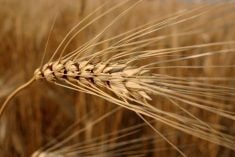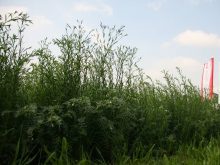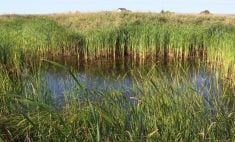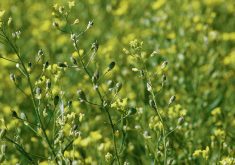Mechanical weed seed control at harvest has been around for a while in Australia, but it’s a relatively new technology in Canada and adoption rates remain comparatively low.
A recent study conducted in Western Canada looked at the efficacy of that technology and the role it could play in alternative weed control strategies as concerns about herbicide resistance on the Prairies continue to rise.
The study was led by Breanne Tidemann, a research scientist with Agriculture and Agri-Food Canada based in Lacombe, Alta. who specializes in weed control.
Read Also
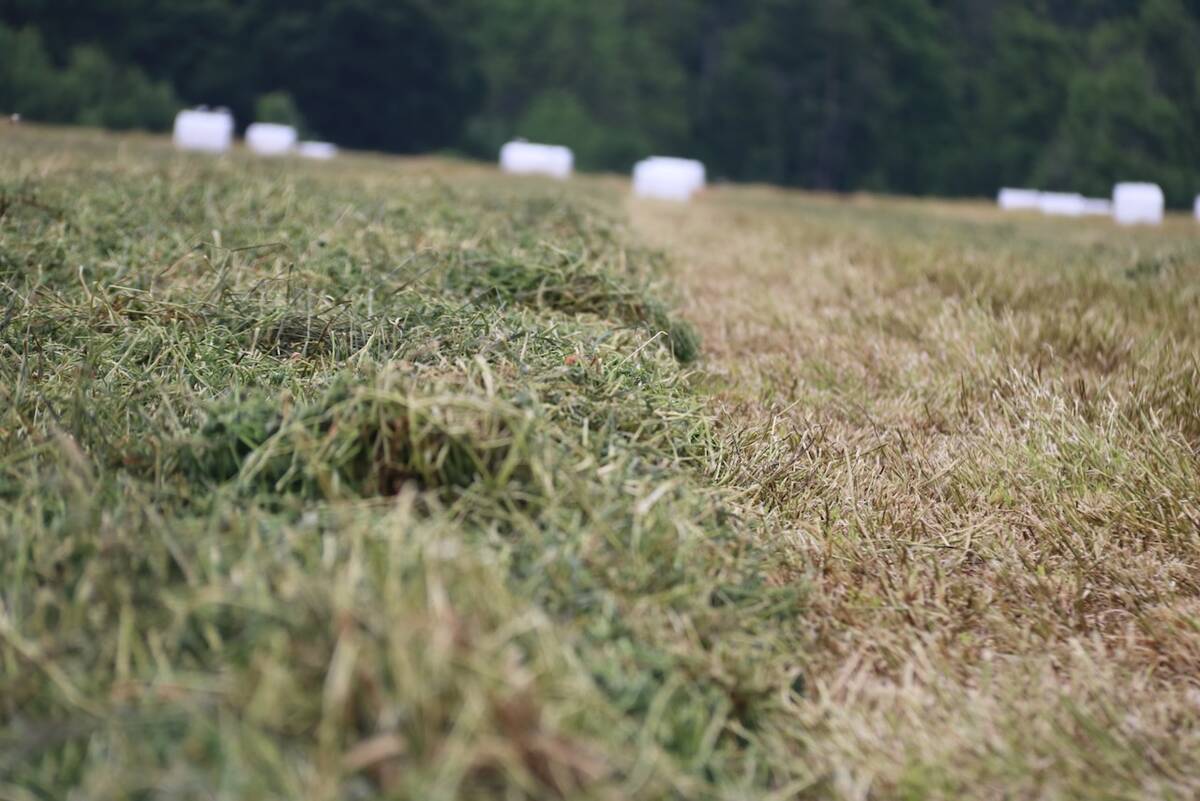
New high-performance forage training program to launch in 2026
A new Canadian Forage and Grasslands Asssociation high-performance forage program will be a resource for farmers, agronomists and others in the forage sector.
It was conducted between 2017 and 2020 on nearly two dozen farm fields within a 50-kilometre radius of AAFC’s Research and Development Centre at Lacombe. The results of the study were published in the Nov. 23, 2023 edition of the Canadian Journal of Plant Science.
As part of the study, a Harrington Seed Destructor physical impact mill, manufactured in Australia, was evaluated in 20 producer fields on a wide spectrum of common weed species including volunteer canola, hemp-nettle, chickweed, sow thistle and cleavers.
While similar studies have been or are now being conducted in the United States and Australia, Tidemann says this study was the first conducted in Canada.
“There were a lot of questions about which weeds will it work on here, how well does it work here, that sort of thing,” she says.
“We’d done some preliminary weed biology type work, some stationary threshing work, but farmers wanted to see it working in the field. So that’s what we were trying to do, take it in the field and test it there.”

A separate, pull-behind model of the Harrington Seed Destructor was used in the study. Newer versions of the device can be fully integrated into most combines but Tidemann says the older version still offers a similar level of weed seed control.
How it works
As a crop is harvested by the combine, the chaff fraction with the weed seeds is separated from the rest of the plant and drawn into a weed mill. The mill spins at thousands of r.p.m., causing weed seeds to collide against the surface multiple times and break into small bits that are no longer capable of growing.
Most of the fields in the study were selected following a call for volunteers put out by Tidemann. She and her research team also scouted the area and worked with local farmers to find suitable locations. No restrictions were placed on herbicide applications or management practices on any of the farms included in the study.
Key considerations, she says, were that fields included in the study should offer a variety of different crop types along with dense weed growth and a diversity of weed species.
Producers were asked to identify the locations of troublesome weed patches in their fields, which were marked by the researchers. Those patches were then divided into six plots. Three were harvested as normal and the other three were harvested using the Harrington Seed Destructor, using the same combine and harvested at the same time.
The fields were harvested in 2017, 2018 and again in 2019 and weed population density assessments were conducted in 2017, 2018, 2019 and 2020. In 2020, the researchers also took seed bank samples from the soil of each of the 20 fields studied.
Few significant differences
While the study did show density reductions in some weed populations, the final results indicated few statistically significant differences in weed densities between the fields treated with the physical impact mill and those that weren’t.
“There were some (differences), but there wasn’t as many as I expected initially when we were developing the project,” Tidemann says of her initial reaction to the results.
Several factors could explain the results, she added. One is that weeds were so dense in the patches studied that removing a small portion of weed seeds didn’t substantially change the above-ground weed population.
Perhaps more importantly, Tidemann notes, measurable reductions in weed densities may have been limited by the short time frame of the experiment. Many of the weeds targeted in the study have a dormancy longer than three years.
“Because so many of the weeds that we have, have quite established seed banks, you really have to draw that seed bank down before you start to see the impact on your seedling density.
“There has to be enough time for what’s already in the seed bank to sort of be dying off or emerging and being controlled … and not producing that to replenish the seed bank before you really start to see the impacts.”
Still, Tidemann is pleased that the study provided insight on the effectiveness of mechanical weed seed technology on the Prairies. It showed population reductions in some weed species, including cleavers, in some fields.
A different view
She says discussions with some of the growers who are using impact mills suggest researchers should look more closely at the impact they can have on weeds spatially, rather than weed density alone.
“The example that’s been given to me a couple of times by a few producers is with kochia. They can’t really tell where they’ve used their impact mill, but they can really tell where they didn’t use it because where they didn’t use it, their kochia patch has now spread quite a ways.
“For me, that was a big outcome. For researchers working on this, maybe in short-term studies which are the easier ones to get funded, we need to focus more on the spatial impact rather than the density impact.”
The study results also supported findings by early adopters of seed mills: be cautious of how much green material is fed into the device.
“If you have a lot of green material, you can expect your mill to plug. If 50 per cent of what’s going through is green or tough, the mill will plug. You will have issues there,” says Tidemann.
Despite the study’s somewhat inconclusive findings, she believes impact mills could have a role in weed management in Western Canada.
“All the work that we’ve done suggests there’s very good reason to expect it will be effective here. The field study really highlighted gaps in our understanding … of seed bank dynamics, and gaps in understanding of how to test some of these technologies.”
Importance of research
Jason Lenz was eager to participate in the AAFC study. He operates a 2,000-acre grain farm near Bentley, Alta.
“Research is important. We’re always looking for continuous improvement in the way we do things,” he says. “We definitely want to help support our researchers that are doing that work. And I think it’s just a good way to learn and a good way to give back to the industry.”

Lenz was encouraged by the study results.
“Yeah, I think it has its place in Western Canada for sure. It’s not necessarily a silver bullet, but certainly having that technology, it can be put to use.”
Kevin Bender operates a 1,600-acre grain farm near Sylvan Lake. He took part in the study because “I’m always eager to look at new things or support research into potentially better technology or things for our industry.”
Bender thinks the results indicate there is a place for mill technology in the region and he welcomes any new tools to combat the spread of weeds. However, he’s still not sure it has a place on his farm.
Long-term approach
Trevor Thiessen has a keen interest in the study results. He is president and co-owner of Redekop Manufacturing, a Saskatoon-based company that manufactures its own Seed Control Unit (SCU) and also distributes the EMAR Chaff Deck from Australia.

Thiessen agreed with many of the study’s findings, noting a mill can only kill weed seeds that can be harvested and don’t fall to the ground before harvest time. He also concurs with the study’s authors that it can take years before a farmer will see the benefits of weed seed crushing technology.
“Farmers have to be willing to make the commitment, recognizing it’s not a short-term thing. This is a long-term thing. Three years is the minimum before you start seeing the benefit and probably five or six years is where you start to really see the reduction in the weed bank and the overall control,” he says.
“As the study points out, there are some limitations and those limitations are important for farmers to understand. Those need to be factored into every farmer’s decision as to whether this tool fits or doesn’t fit their farming operation.
“If you can’t control (a weed problem) with chemical and you can’t control it with your rotation and it’s creeping into your field, you need some more options. This is just one more tool.”
Thiessen says growers should be aware of recent advances in mill technology.
Newer models are more energy efficient because they are integrated into the combine and don’t require a separate power source. They are also more efficient at capturing weed seeds than the older cart model used in the AAFC test, he says.


A study out of Iowa State University indicated 66 per cent of weed seeds are channelled into the newer units, which can destroy 90 to 95 per cent of those seeds.
Thiessen is confident that interest in weed mill technology will increase.
“The interest is growing and I think the benefit is becoming more and more clear to western Canadian farmers. It’s not for every farm, it’s not for every operation, but there are lots of farmers who see the weed pressure in a situation where this kind of tool can make a difference in helping them stay on top of it.”






